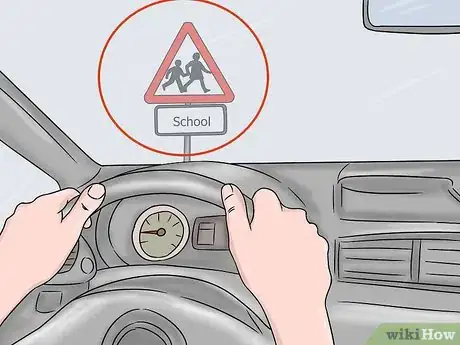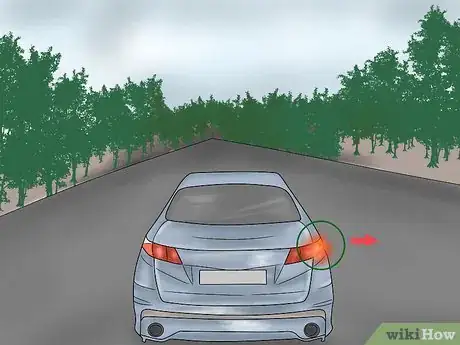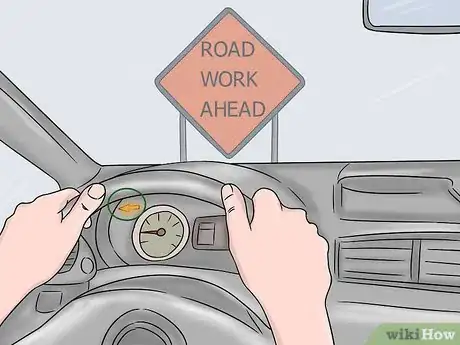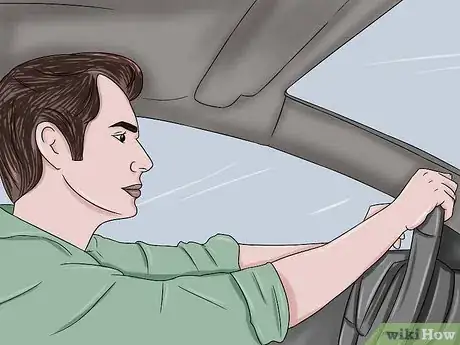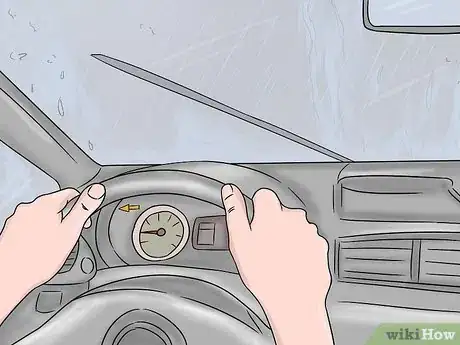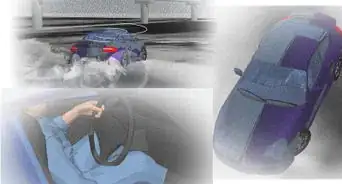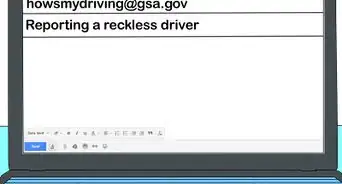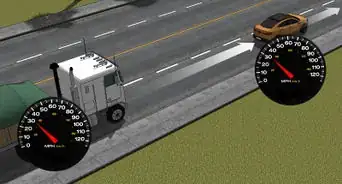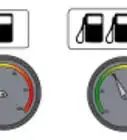This article was co-authored by Ibrahim Onerli. Ibrahim Onerli is a Driving Instructor and the Manager of Revolution Driving School in New York City. His mission is to make the world a better place by teaching safe driving. Ibrahim trains and manages a team of over eight driving instructors. He specializes in teaching defensive driving and stick shift driving.
There are 7 references cited in this article, which can be found at the bottom of the page.
wikiHow marks an article as reader-approved once it receives enough positive feedback. In this case, 88% of readers who voted found the article helpful, earning it our reader-approved status.
This article has been viewed 171,688 times.
You can avoid accidents while driving by staying alert, driving the speed limit, and using your turn signals properly. Additionally, by driving responsibly, you can substantially reduce your risk of getting into an accident or collision. If you are a new driver, make sure to get enough practice, train for bad weather conditions, and limit your night driving to avoid accidents.
Steps
Driving Defensively
-
1Stay alert. In addition to keeping your eyes on the road, stay alert by checking your rear view and side mirrors often.[1] Check for speeding cars or cars that are driving too close to you. Also, be aware of your blind spots and make sure to check them before switching lanes.[2]
- Make sure to watch for kids and animals, especially in parking lots and residential areas.
-
2Follow the speed limit. Speed limits are generally posted every three to five miles. Make sure to watch for speed limits signs and adjust your speed accordingly. If you do not know the speed limit, then limit your speed to 30 mph (48 kph) if you are driving on the street and 60 mph (96 kph) if you are driving on the highway.[3]
- Remember that the faster you drive, the less reaction time you have to avoid accidents.
Advertisement -
3Pay attention to traffic signs. Watch for traffic lights, pedestrian crossing, school zone, and stop signs. Additionally, heed warning signs such as merging traffic, winding road, and sharp turn ahead, to name a few. This way you can avoid potential collisions, as well as traffic tickets.[4]
-
4Use your turn signals properly. Turn your signal on at least a block (100 feet/30 meters) before making a turn.[5] This way, the other cars behind you will have enough time to slow their speed or switch lanes before you make your turn.[6]
- Additionally, make sure to turn your signal off after you have turned or switched lanes so you can avoid confusing other cars.
-
5Let aggressive drivers pass you up. Aggressive drivers will speed, honk, tailgate, and cut you off. The best thing to do in this situation is to slow down and let them pass you or go around you.[7] The idea is to create distance between you and an aggressive driver.[8]
- The more distance there is between you and an aggressive driver, the safer you will be.
-
6Maintain a three second cushion between you and other cars. This way, you will have enough time to react if something goes wrong, like a tire blowout. Additionally, by giving yourself enough time to get to the places you need to go, you can avoid having to speed and tailgate other cars.[9]
-
7Avoid construction zones. If you know that an area on your way to work or school is under construction, then try to find an alternate route until the construction is complete. If construction zones are unavoidable, then make sure to drive the speed limit and pay attention to other road signs, like detour signs, to avoid accidents.[10]
- The speed limits in construction zones are dramatically reduced for you and the workers' safety. Make sure to pay attention to these signs to avoid accidents and traffic tickets.
-
8Use caution during poor weather conditions. Rain, snow, fog, sleet, high winds, and other poor weather conditions can increase your chances of an accident. Therefore, make sure to drive slowly, turn your headlights on, and increase the distance between you and other cars to avoid accidents.[11]
- Keep both hands on the wheel and limit lane changes, i.e., stay in one lane.
- Make sure your car is equipped to deal with poor weather conditions; for example, make sure your windshield wipers and headlights work properly.
Driving Responsibly
-
1Turn your cellphone on silent. Alternatively, turn it off or place it out of reach like in the trunk or the glove box. This way you can avoid distracting calls or texts. Distracted driving was the cause of 3,000 accidents in 2013.[12]
-
2Limit other distractions. Avoid eating, changing the CD or radio station, shaving or applying makeup and other distracting behaviors while driving. These distracting behaviors can cause you to take your eyes off of the road, increasing your chances of having an accident.[13]
- Wait until the the car is parked or until you get to your destination to change CDs, eat, or apply makeup.
-
3Do not drive impaired. Make sure to arrange an alternative form of transportation if you plan on drinking, using drugs, or if you are taking medications that impair your performance. Arrange to have a designated driver or use a car service to take you to where you need to go.[14]
- Additionally, do not drive while you are tired. Either take a nap before driving or use a car service.
-
4Limit the number of passengers in your car. With every additional passenger, the risk of an accident or collision increases. Therefore, try to drive with a maximum of one or two passengers at a time.[15]
- If you have children, make sure they are wearing their seatbelts at all times to ensure everyone’s safety. Also, try not to reach back to retrieve something from the floor for your child while you are driving.
Avoiding Accidents When You’re a New Driver
-
1Practice, practice, practice. Make sure to get as much supervised practice as you can. Commit to driving with an experienced driver before and after you get your driver’s license until you are comfortable driving by yourself. This way, you will have enough experience to drive safely on your own.[16]
-
2Train for bad weather conditions. Do this once you are comfortable driving during good weather conditions. Train for bad weather conditions by driving with an experienced driver while it is raining, snowing, foggy, or during other poor weather conditions.[17]
- In general, avoid driving in extreme weather conditions whether you are an experienced driver or not.
-
3Limit driving at night. The risk of getting into an accident or collision is three times higher during the night. Therefore, try to limit your night driving and avoid driving after midnight. In general, avoid driving at night until you are comfortable driving during the day.[18]
Community Q&A
Did you know you can get answers researched by wikiHow Staff?
Unlock staff-researched answers by supporting wikiHow
-
QuestionWhat can I do to avoid an accident on the road?
 wikiHow Staff EditorThis answer was written by one of our trained team of researchers who validated it for accuracy and comprehensiveness.
wikiHow Staff EditorThis answer was written by one of our trained team of researchers who validated it for accuracy and comprehensiveness.
Staff Answer wikiHow Staff EditorStaff Answer
wikiHow Staff EditorStaff Answer -
QuestionHow can you prevent a bus accident?
 Community AnswerYou should be careful on the road and to keep all the safety rules. It also depends on other drivers, pedestrians, sometimes animals and the weather.
Community AnswerYou should be careful on the road and to keep all the safety rules. It also depends on other drivers, pedestrians, sometimes animals and the weather. -
QuestionDo these rules apply if I'm driving on snowy or icy roads?
 Community AnswerYes, however, you need to use extra caution when driving on snowy/icy roads. Drive slowly, limit your lane changes, and make sure your car is prepared to deal with snow and ice.
Community AnswerYes, however, you need to use extra caution when driving on snowy/icy roads. Drive slowly, limit your lane changes, and make sure your car is prepared to deal with snow and ice.
References
- ↑ Ibrahim Onerli. Driving Instructor. Expert Interview. 18 November 2019.
- ↑ http://ehstoday.com/news/ehs_imp_34458
- ↑ http://find-a-driving-school.ca/top-8-driving-tips-avoid-accidents/
- ↑ http://find-a-driving-school.ca/top-8-driving-tips-avoid-accidents/
- ↑ Ibrahim Onerli. Driving Instructor. Expert Interview. 18 November 2019.
- ↑ http://barrandmudford.com/frequently-asked-questions/how-to-avoid-common-accidents-and-injuries/
- ↑ Ibrahim Onerli. Driving Instructor. Expert Interview. 18 November 2019.
- ↑ http://find-a-driving-school.ca/top-8-driving-tips-avoid-accidents/
- ↑ http://ehstoday.com/news/ehs_imp_34458
- ↑ http://find-a-driving-school.ca/top-8-driving-tips-avoid-accidents/
- ↑ http://kidshealth.org/en/teens/driving-conditions.html
- ↑ http://www.consumerreports.org/cro/news/2015/04/6-ways-to-avoid-a-car-accident/index.htm
- ↑ http://find-a-driving-school.ca/top-8-driving-tips-avoid-accidents/
- ↑ http://find-a-driving-school.ca/top-8-driving-tips-avoid-accidents/
- ↑ http://barrandmudford.com/frequently-asked-questions/how-to-avoid-common-accidents-and-injuries/
- ↑ https://www.geico.com/information/safety/auto/teendriving/top-ten-tips/
- ↑ https://www.geico.com/information/safety/auto/teendriving/top-ten-tips/
- ↑ https://www.geico.com/information/safety/auto/teendriving/top-ten-tips/
- ↑ http://www.consumerreports.org/cro/news/2015/04/6-ways-to-avoid-a-car-accident/index.htm



